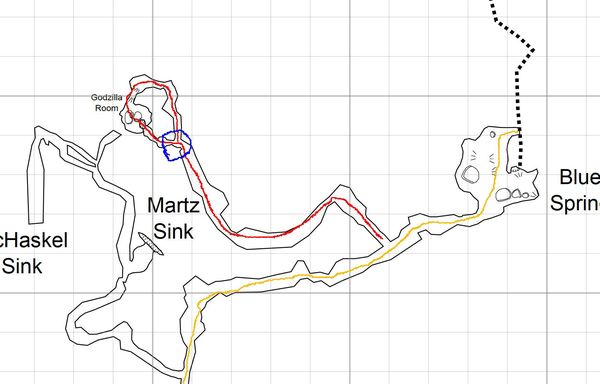

In November 2018, NFSA interim President Kelly Jessop and NSS-CDS Training Director Jon Bernot asked for the formation of a group to discuss current marking standards, line placement and navigation in several cave systems within the High Springs / Ft. White / Lake City area. The idea behind the request was for the group to evaluate the existing practices and determine whether they were appropriate or not, with the objectives of improving safety and conservation. This report contains their recommendations.
Cave divers tend to be an opinionated group and any discussion about changing line markings, placement, and navigational decisions is bound to stir an emotional response from many people in the cave diving community. In order to proceed within any reasonable time-frame it was decided that the group had to be small enough that schedules could be managed, but to serve the best interests of the community at large, the composition of the group needed diversity. It was decided that it would be important to bring in one instructor from each of the main cave diving training agencies represented in the North Florida area of discussion (GUE, IANTD, NSS-CDS, TDI), but the group also wanted involvement from divers with experience in a variety of cave systems around the world. The members of the group are Jon Bernot, Pete Butt, Rick Crawford, Kirill Egorov, Lamar Hires, Max Kuznetsov, Ken Sallot, Randy Thornton
During our first meeting, the group agreed to a series of principles and rules which were used for forming our recommendations. Those principles are:
The group discussed Devil’s Ear/Eye, Little River, Madison Blue Springs, and Peacock Springs. Recommendations – Devil’s Ear/Eye The group recommends the following changes to the lines in Devil’s Ear/Devil’s Eye:
Extend the start of the permanent gold line from 50’ to the back of the Devil’s Eye Cavern at 30’. This will eliminate the need for multiple teams to run a reel through the chute, reducing erosion and wear while minimizing entanglement hazards. -- this work was completed on 4/24. T the lines in the expressway tunnel. The changes proposed are reflected in the attached map.
The group reviewed the current line placement in Little River and has no recommended changes at this time.
The group recommends the following change to the line placement in Madison Blue: 1. T’ing the Godzilla Room Circuit The changes are reflected in the attached map.
The group recommends the following changes to the lines in Peacock Springs:
1. T the Peanut Line into the Olsen / Challenge line. The Peanut to Olsen continuous line will be measured with arrows changing direction at the midway point.
2. To reduce diver traffic, cut back the Crossover Tunnel jump and leave it unmarked except with a distance arrow. All arrows on the Crossover Tunnel should point to Olsen.
3. To reduce diver traffic, remove the jump indicator markings for the Waterhole tunnel. The Waterhole tunnel will be measured with arrows changing direction at the midway point.
4. To reduce diver traffic, the Nicholson tunnel jump will be left unmarked, except with a distance arrow.
5. To reduce diver traffic, the Cisteen tunnel jump will be left unmarked, except with a distance arrow.
6. The Cisteen tunnel will be measured and the arrows reversed at the midway point.
7. To minimize diver impact, the Nicholson and Cisteen intersection will be T’ed together.
8. To minimize diver impact, both sides of the Wishbone tunnel will be T’ed into the Cisteen line.
9. To minimize diver impact, the Distance tunnel jump will be left unmarked, except with a distance arrow.


